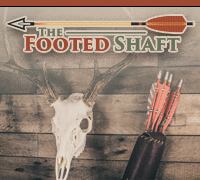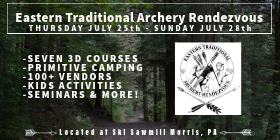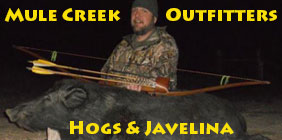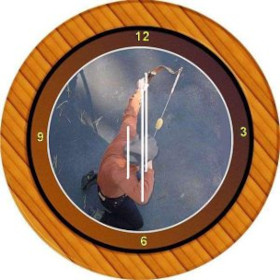John, even a dull, repeatedly used razor blade will still shave hair - it just won't give you a 'perfectly clean on one pass' shave much beyond the first time it's used. 'Shaving sharp' covers a lot of territory. So, let's look at it in terms of the ability of our broadhead's edge to do what we intend - to make the deepest, cleanest, most efficient cut it can.
The thinner you can get an edge, the higher it's mechanical advantage. Why does that matter? At an equal level of 'shaving sharpness' the edge with the higher MA will slice a blood vessel with less applied pressure. At an equal level of 'shaving sharpness' AND equal pressure between the edge and the tissues, a thinner, higher MA edge will slice a blood vessel deeper than a more-abrupt edge bevel. The thinner your broadhead's edge, the better and more efficiently it cuts.
For something designed to make a single fine-slice, the thinnest edge you can use is desirable but, as discussed above, that edge has to be durable enough to resist damage during that one slice. During any given impact, at any given level of force, the lower-limit of edge bevel-angle that your BH can have and still resist damage is determined by (1) the steel from which the broadhead is made and (2) the overall MA of the broadhead. A third, and closely-related factor can be added also; the bevel's profile. That's the 'compound angle edge' Dave mentioned.
A compound angle edge can be used to permit a lower 'main sharpening' angle by adding a very narrow, more abrupt sharpening angle right along the edge. I tend to refer to it as a micro-bevel, and is the type of edge bevel I routinely use as steel hardness in the broadhead being sharpened decreases.
Though it's double-beveled and and has excellent quality blade-steel, the Silver Flame uses a compound angle bevel; and a compound angle bevel can be used on a single-bevel edge too. Though they do lower the overall MA of the bevel somewhat, on a given blade a compound bevel will give a somewhat stronger, more damage-resistant edge than will a comparable main-sharpening-angle straight-tapered edge. However, whenever the steel quality permits I prefer a straight taper on the edge bevel; at the lowest possible angle allowing edge strength.
So, the bottom line answer is that you want to use the lowest possible sharpening angle that will resist damage; for the broadhead you are using. On the single-bevel broadheads I listed above the minimum angle that RELIABLY holds up is 25 degrees on the beveled side, and zero on the other side. That gives a total bevel-angle of 25 degrees; exactly half as thin (and with DOUBLE the MA) as the commonly-used 25-degree double bevel edge (sharpened at 25 degrees on each side). To get an equal total bevel angle and bevel MA, a double-beveled edge would have to be sharpened at twelve-and-one-half degrees on each side.
There are some broadheads out there so soft that, even when sharpened at 30/30 (a sixty degree total sharpening angle), they noticeably dull during all-soft-tissue penetration.
Hope that helps,
Ed
TGMM Family of the Bow














